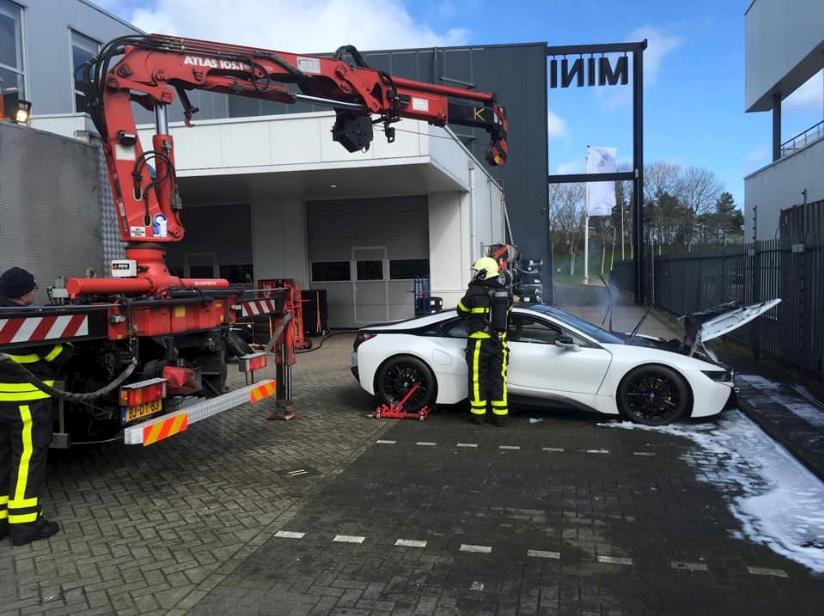Fire crews in the Netherlands responded to a smoking BMW i8 plug-in hybrid by lifting the car with a crane and immersing the vehicle in a huge vat of liquid.
Firefighters from the Central and West Brabant Fire Brigade in the Dutch province of Brabant were summoned to a local showroom on March 25, following reports of the BMW with smoke coming out of it.





